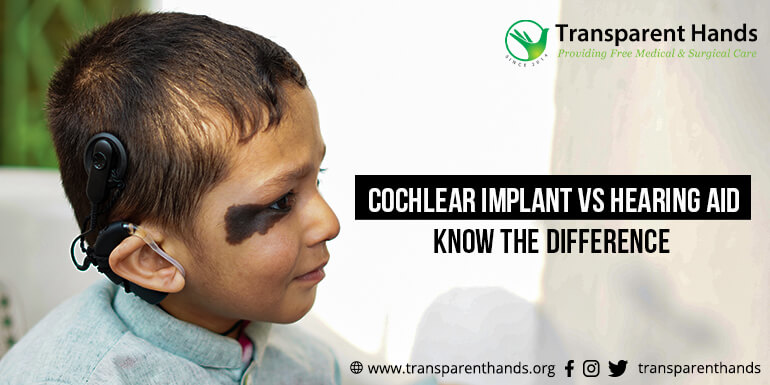Cochlear Implant vs Hearing Aid: Know the Differences

Hearing loss has a dramatic impact on a person’s quality of life. It makes communication, learning, and social interactions challenging. Some people with hearing loss are born without the ability to hear, while others lose it due to injuries, aging, or genetic conditions. Besides affecting social life, hearing loss also affects a person’s career choices. However, advancements in biomedical technologies are enabling us to overcome hearing loss. A cochlear implant or hearing aid can assist with hearing. Let’s explore the differences between a cochlear implant and a hearing aid.
What is a Cochlear Implant?
People with severe hearing loss may be advised by the doctor to use a device known as a cochlear implant. It involves surgically implanting the hearing device. A cochlear implant has internal and external components. The sooner a child with hearing loss undergoes cochlear implant surgery, the sooner they will be able to reach their hearing and speech development milestones.
How Do Cochlear Implants Work?
The cochlear implant consists of two parts:
- Internal component
- External component
Both of these parts communicate with each other. This system bypasses damaged, non-functioning hair cells through electrical pulses that relay signals directly to the auditory nerve. The outer part detects sounds from the surroundings and converts them into electrical pulses. Then these signals are transmitted to the inner component of the cochlear implant. The external component is usually installed a few weeks after the surgery. Those who get cochlear implants also need to undergo therapy.
Who Can Get Cochlear Implants?
Cochlear implants were approved by the U.S. Food and Drug Administration (FDA) in the early 2000s. Cochlear implants can be used to overcome severe hearing loss. Children and adults who have lost their sense of hearing later in life can also benefit from cochlear implants. But another question arises: who should get a cochlear implant instead of a hearing aid? Those with inner ear or auditory nerve damage should get a cochlear implant. It is advised for those with severe hearing loss. Of course, it should only be obtained if the ENT surgeon advises it.
Donate For Free Cochlear Implant Surgeries
What are Hearing Aids?
Now, let’s discuss the other type of hearing device we mentioned earlier – the hearing aid. Hearing aids are simpler than cochlear implants. You might have come across a person wearing hearing aids and wondered how they work. Well, as their name suggests, they help people with hearing loss. Generally, all types of hearing aids work the same way. They collect sound waves from the environment, amplifying them, and then delivering them to the ears. They are available in several forms, varying in size, shape, and color. Some are called BTE (Behind the ear), while some are called ITE (In the ear). The former is worn around the ear, while the latter goes inside the ear. Some hearing aids go inside the ear canal.
Who may use a hearing aid?
Anyone with mild to moderate hearing loss can get hearing aids. There is no age limit for getting hearing aids. Though a discussion with a doctor beforehand and a doctor’s prescription might be necessary. People who have a speech processing of 50% or more get a hearing aid.
Technology Behind Hearing Aids
Hearing Aids consists of mainly four parts
- Microphone
- Amplifier
- Speaker
- Battery
The microphone picks up sounds from the surroundings. Then a computer chip with an amplifier inside the hearing aids converts those sounds into electrical signals. The amplifier adjusts the sound signal. These signals are then converted back to sound waves and delivered directly to the ear. As a result, a hearing aid improves hearing and speech comprehension.
The comparison between a cochlear implant and hearing aid
To make it simple, let’s summarize the differences in a table:
| Cochlear implant | Hearing aid | |
| Utility | When the sensory nerve or inner ear is damaged | For less severe hearing loss |
| Insertion | It is implanted surgically | It is wearable and can be removed |
| Invasiveness | Involves surgery | Non-invasive |
| Adaptation | Adapting to cochlear implants may take months | Adapting to a hearing aid takes just a few weeks |
| Risks | Surgical procedures may result in injuries | Little to no risk |
(The information in this article should not be taken as a substitute for professional medical advice.)
Related Topics
Free Cochlear Implant by Transparent Hands
How Does a Cochlear Implant Enable the Deaf to Hear?










Leave Your Comments